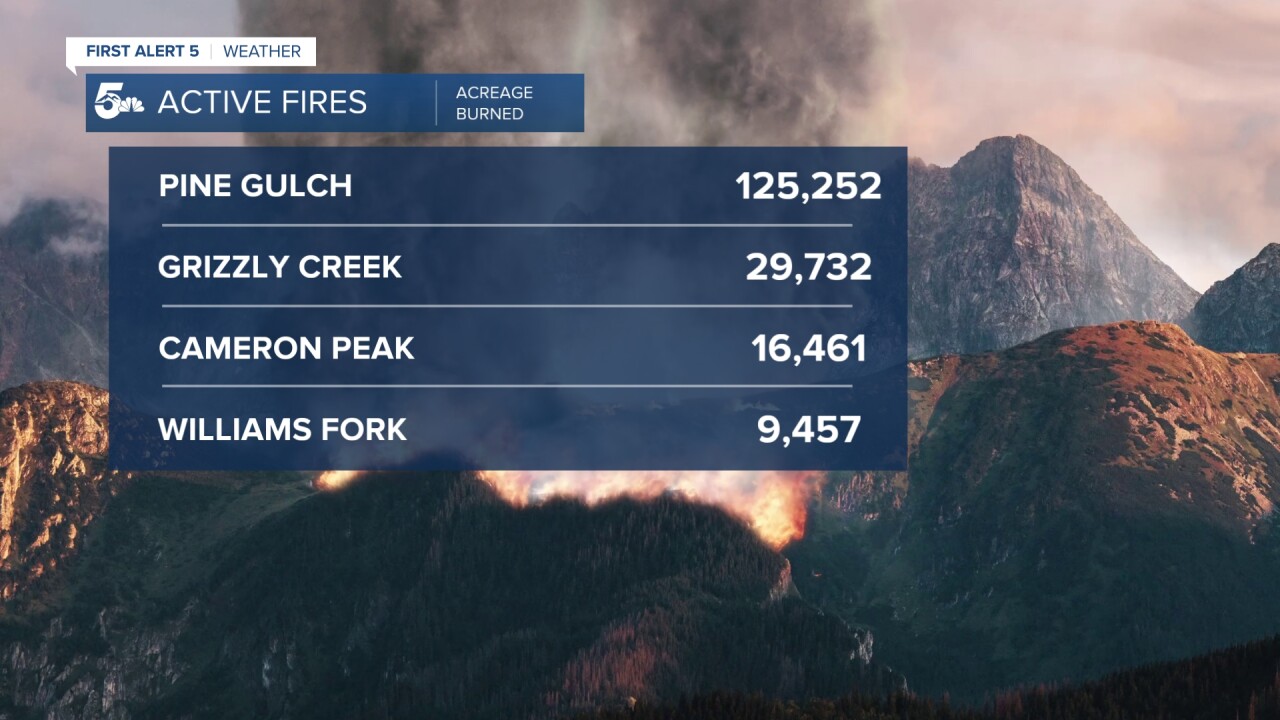Four large wildfires are raging across Colorado: the pine gulch, grizzly creek, cameron peak, and williams fork fires. Each of these fires is spewing smoke into the atmosphere, some of which drifts down to the surface where we breathe.

In this article, we'll talk about the effect of wildfire smoke on your lungs, and the steps you can take to keep you and your family safe.
What does wildfire smoke do to our lungs?

Wildfire smoke is a mix of gasses and fire particles from burning trees, plants, building, and other random material within the fire.
Breathing in smoke can affect you right away, causing:
- Coughing
- Trouble breathing
- Wheezing
- Asthma attacks
- Stinging eyes
- Scratchy throat
- Runny nose
- Irritated sinuses
- Headaches
- Tiredness
- Chest pain
- Fast heartbeat
Who is most susceptible to wildfire smoke?

Wildfire smoke can make anyone sick, but people with asthma, Chronic Obstructive Pulmonary Disease (COPD), heart disease, pregnant women, and first responders have the highest risk.
Children under the age of 18 and adults age 65 and older are considered at risk from heavy wildfire smoke.
What role does COVID-19 play this year?
This year, the COVID-19 pandemic is overlapping with a growing wildfire season here in the United States.
Exposure to air pollutants in wildfire smoke can irritate the lungs, cause inflammation, alter immune function, and increase susceptibility to respiratory infections, likely including COVID-19.
Those infected by or recovering from COVID-19 should take extra precautions to protect their lungs by following the steps listed below.
What can we do to protect ourselves on heavy smoke days?
The simplest way to protect yourselves from wildfire smoke is to limit the amount of smoke you breathe into your lungs in any way possible.
Here is a complete list put together from the CDC on how to stay safe during a wildfire, or on heavy smoke days:
Keep smoke outside:
- Choose a room you can close off from outside air.
- Set up a portable air cleaner or to keep the air in this room clean even when it’s smoky in the rest of the building and outdoors.
Reduce your smoke exposure by wearing a respirator:
- A respirator is a mask that fits tightly to your face to filter out smoke before you breathe it in.
- You must wear the right respirator and wear it correctly. Respirators are not made to fit children.
- If you have heart or lung disease ask your doctor if it is safe for you to wear a respirator.
- Avoid using candles, gas, propane, wood-burning stoves, fireplaces, or aerosol sprays and don’t fry or broil meat, smoke tobacco products, or vacuum.
- If you have a central air conditioning system, use high-efficiency filters to capture fine particles from smoke. If your system has a fresh air intake, set the system to recirculate mode or close the outdoor intake damper.
Keep track of fires near you so you can be ready:
- AirNow’s “Fires: Current Conditions” page has a map of fires throughout North America.
- NOAA’s “Fire weather outlook" page maps fire watches and warnings.
- Listen to the Emergency Alert System (EAS) and National Oceanic and Atmospheric Administration (NOAA) Weather Radio for emergency alerts.
Pay attention to any health symptoms if you have asthma, COPD, heart disease, or are pregnant. Get medical help if you need it.
More Resources:
The CDC has a wonderful and comprehensive guide for wildfires. Click here for additional information.
Click here for information on air quality alerts, the effect of ozone and high pollution days on your lungs, and links to the air quality in the Pikes Peak Region.


